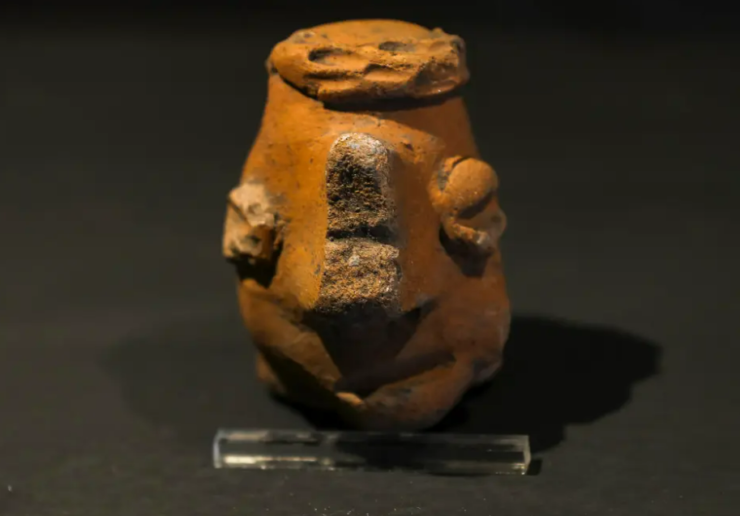An ancient pre-Columbian cemetery found in the capital of Ecuador is providing new information on the human groups who first arrived there some 2000 years ago.
More than 5,000 artifacts were discovered at the site, which is situated in what is now the Llano Chico neighborhood of Quito’s north side and was previously covered by farmland, including ceramic vessels and stone carved ornamental items.
Archaeologists from Quito’s Metropolitan Institute of Heritage (IMP) discovered a number of graves, some of which include funeral gifts including artifacts these people utilized in their everyday life. According to Andres Mosquera, one of IMP’s archaeologists, the cemetery is currently one of the most important archaeological sites in the capital of Ecuador.
It is composed of one-meter-high shafts shaped like bells or trapezoids, which used as tombs, food storage spaces, or landfills. Although more than 5,000 pieces were recovered, only 128 were fully intact, Mosquera said. He say to Efe that the artefacts that were at least 75% intact have been registered in the government’s databases.
The deceased remains had been buried within the tombs in a bent position, which is typical of pre-Columbian cemeteries, the archaeologists saw. But they found no evidence that the bodies – including adults no more than 40 years old and children – had been covered with any type of fabric.
The Pichincha Volcano eruption had left a layer of ash on the cemetery, which was 80 centimeters (just under three feet) below ground.
The cemetery is significant in especially for the variations in burial rites discovered, a characteristic that archaeologists claim exposes the socioeconomic divisions of that civilization.
Some graves were relatively austere, while others possessed a large quantity of vases and beautiful items. “This is very important considering that this find corresponds to the period of Regional Development, which theoretically was a period in which political hierarchies emerged,” the specialist said. “And they were very marked hierarchies, with stratified political systems, especially on the coast.”
According to Mosquera, the intentional cranial deformity of some of the bones was another indicator of class stratification. He said that young children of the social elite had their craniums purposefully lengthened as physical evidence of their higher position.
The expert also noted that this was a traditional practice of other contemporary cultures in what is today Ecuador ’s coastal region, including La Tolita and Jama Coaque. “Without a doubt, what we’re finding here in Quito reflects the influence of the La Tolita culture.”
The pottery items discovered within the tombs also show signs of this coastal influence, since their design is very similar to that of the Jama Coaque civilization. Among the items discovered were three legged vessels, bowls and containers with globular shapes that had human or animal forms, anthropomorphic figures, and zoomorphic ornaments.
The finding of maize, yucca, and potato remnants inside those figurines provides information about the diet of these people.
According to Mosquera, IMP archaeologists hope to conduct further research in the Llano Chico area in the coming months. We eagerly await the results
